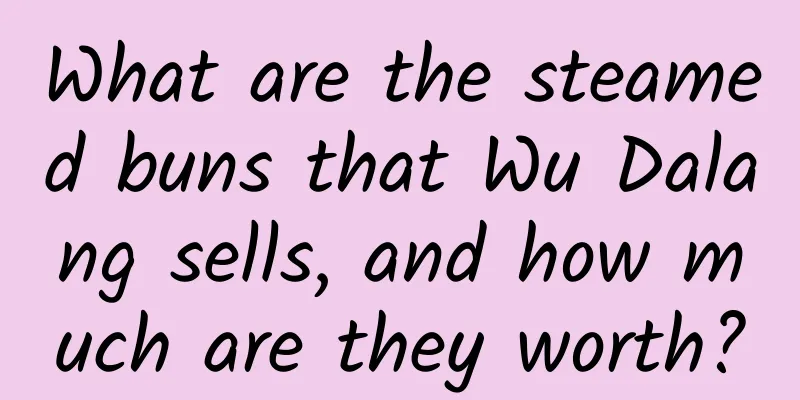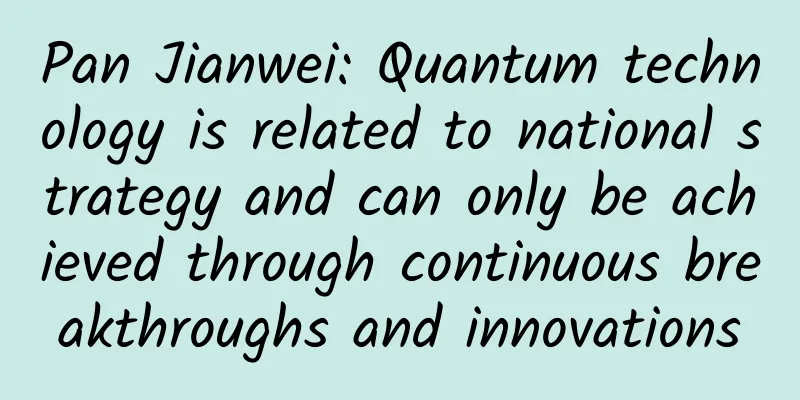What are the steamed buns that Wu Dalang sells, and how much are they worth?

|
The Wu Dalang that people are familiar with nowadays is mainly the Wu Dalang who sells pancakes in the Water Margin written by Shi Naian. However, on the Internet, there are many kinds of research on Wu Dalang, and there are many different personalities and opinions. So who exactly is Wu Dalang? Wu Dalang in Water Margin In Shi Naian's "Water Margin", Wu Dalang is Wu Song's elder brother. He is less than five feet tall and ugly. People in Qinghe County nicknamed him "Three-inch Ding Gu Shupi" because he was short. In the Yuan and Ming dynasties, one foot in China was about 31 centimeters, so Wu Dalang's height was about 155 centimeters, a short man, but not a dwarf. Some film and television works describe Wu Dalang as a dwarf, which is too short. It is said that Wu Dalang was ugly but hardworking, making a living by selling pancakes. He was also very lucky at one time, and married a beautiful wife named Pan Jinlian by mistake. But he died because of this beautiful wife. Under the design and seduction of Wang Po, Pan Jinlian could not resist the seduction of the nouveau riche Ximen Qing, and committed adultery with her. Later, Wu Dalang discovered the adultery. In order to conceal their tracks and achieve the purpose of long-term companionship, Ximen Qing and Pan Jinlian conspired to poison Wu Dalang with arsenic. Wu Dalang has a younger brother named Wu Song, who is a hero who killed a tiger with his bare hands. He works in the government office. When he came back from a business trip, he saw his brother suddenly died. He felt suspicious and through some investigation found evidence that Ximen Qing and Pan Jinlian had committed adultery and murdered his brother, so he killed them to avenge his brother. After being sentenced, Wu Song suffered many weeks of torture and finally went to Liangshan, where he became one of the 108 generals, ranking the fourteenth among the thirty-six Celestial Stars and the seventy-two Disha Stars. His star name was Tianshangxing, and his nickname was Walker Wu Song. Wu Dalang in some books and legends According to the Qinghe County Annals of Hebei Province, Wu Dalang was from Wujia Village, Qinghe County. His surname was Wu and his given name was Zhi. When he was young, he was called Dalang. Wu Zhi was born in a poor family, but he was extremely intelligent, respected literature and martial arts. In his middle age, he passed the imperial examination and became the magistrate of Yanggu County, Shandong Province. He married Pan Jinlian, a virtuous and gentle lady from a noble family. She was the daughter of the prefect of Beizhou, well-educated and well-mannered. She and Wu Dalang loved each other very much and had 4 children together. They lived together until old age. Wu Dalang was an honest official. He controlled river disasters and eliminated evil for the people. The villagers under his rule praised him highly and presented him with an umbrella when he left office. According to historical records, there was indeed a county magistrate named Wu Zhi in Yanggu County, Shandong Province, who served in the Yongle period of the Ming Dynasty, from 1403 to 1424 AD, for 21 years. According to the late Qing Dynasty's "Jiaoxuan Suilu", "In the early Ming Dynasty, there was a county magistrate named Wu in Yanggu County. He was very greedy and cruel. The people gnashed their teeth and called him Wu Pijiang, referring to his skinning and cutting, and also called him Pancake Seller, referring to his profiteering from the mouths of the common people." This record describes Wu Zhi, the magistrate of Yanggu County, as a greedy, cruel and murderous person, which is exactly the opposite of the description in the Qinghe County Chronicles. But no matter which description is used, it seems that there is no Wu Dalang, a three-inch-tall tree-bark man selling pancakes. Which one is more credible? History is written by people, stories are made up by people According to the current chief editor of "Qinghe County Chronicles", "Qinghe County Chronicles" was first compiled in the 29th year of Jiajing in the Ming Dynasty (1550), and has been revised seven times. There is no record about Wu Dalang and Pan Jinlian in it until modern times, because there are many local folk legends, the stories about Wu Dalang and Pan Jinlian were included in the newly compiled "Qinghe County Chronicles", but not in the form of a biography, but in the form of folk literature. It can be seen from this that the Wu Dalang in the Qinghe County Annals is not reliable. There was indeed a Wu Zhi in the Ming Dynasty, but he was not the three-inch-tall Wu Dalang, but a county magistrate or county magistrate. This county magistrate did not seem to have a good reputation. People called him "Mai Bing Dalang", meaning someone who seeks profit from the mouths of the common people. Perhaps this "Mai Bing Dalang" is the origin of Mai Chu Bing Dalang? But Shi Nai'an was a writer in the late Yuan Dynasty and early Ming Dynasty. There was no Jinshi named Wu Zhi in the historical records of the early Ming Dynasty, and Shi Nai'an died in the third year of Hongwu (1370). Therefore, the Wu Dalang he wrote about was definitely not the Wu Dalang after 1403, nor was it the Wu Dalang who began to be revised after 1550. The Wu Dalang in the folk story was not included in the first seven editions and was added later. So what is the origin of Wu Dalang created by Shi Naian? And the Wu Dalang in "Water Margin" is also from Qinghe County, and drifted to Yanggu County, Shandong. Is it really such a coincidence? In fact, this is the charm of literature. "Water Margin" was originally compiled based on some folk legends and the author's preferences. Like many other literary works, the characters in it can be found in reality, but no one in reality is exactly the same as the person in the story. There are also some legendary stories on the Internet, which make Wu Dalang's origin more and more mysterious, but these are a bit far-fetched. Did Shi Nai'an make up this Wu Dalang based on some real-life legends, or did he make up a fictional real person based on the story of "Water Margin" in reality? Don't take them too seriously. Nowadays, everywhere is vying for the celebrity effect. Even Ximen Qing has people crying and shouting for him. If some unbelievable stories are made up, it would be abnormal to follow the trend and take it seriously. A normal person should just treat such rumors as after-dinner talk and laugh it off. What is Wu Dalang's pancake? Wu Dalang himself has not been found, but there is a saying that ancient steamed cakes are actually steamed buns today, but they are not the steamed buns that ancient people called. The steamed buns that ancient people called had stuffing, which is actually the steamed buns today, and the steamed buns today are called steamed cakes. In ancient times, especially before the Song Dynasty, all solid food made of flour was called cake. The baked ones were called sesame cakes, the boiled ones were called soup cakes, and the steamed ones were called steamed cakes. The earliest record of steamed cakes can be found in the "Book of Jin: Biography of He Zeng": "Steamed cakes are not to be eaten unless they have a cross-shaped crack on them." This means that steamed flour is delicious only when there are cracks on it. In today's terms, it is a steamed bun that has been fermented and steamed. It is described in "Water Margin" that the steamed cakes sold by Wu Dalang were steamed in a steamer, so it is more likely that they were steamed cakes (mantou). But why did steamed cakes become steamed cakes? It turns out that it violated the taboo of some people. Of course, this person was not an insignificant person. No one would care about the taboo of insignificant people. This person was the fourth emperor of the Song Dynasty, Zhao Zhen (Song Renzong). There is a character "Zhan" in Song Renzong's name, which sounds similar to "Zheng". At that time, people paid great attention to names, so in the palace, people did not dare to call steamed cakes, so they changed to "Chui Bing". This was recorded in the "Qingxiang Miscellaneous Notes" written by Wu Chuhou, a court official and the governor of Hanyang Army in the Song Dynasty: "The taboo name of Emperor Renzong's temple was Zhen (should be 'Zhen'), which is a mistaken word close to "zheng". Now people in the inner court call steamed cakes "chuibing". "This name spread among the people, and chuibing became the common name for steamed cakes in the past. Therefore, Chuibing is the present-day steamed buns. Of course, the appearance of ancient Chuibing and modern steamed buns may be different. The name Chuibing gradually disappeared after the Ming Dynasty, while the name steamed buns gradually became popular, and steamed buns replaced Chuibing as the common name. So how much does Wu Dalang’s pancake cost, and how much is it worth now? There is no record of the price Wu Dalang paid for his pancakes in Water Margin. Some say it was about 6 wen per pancake during the Ming Dynasty, while others say it was about 8 wen per pancake. So how much is this 1 wen worth in today's RMB? Someone has done the math. In the Ming Dynasty, one tael of silver could buy one dan of rice. One dan is 120 jin. One jin now is 500 grams, while one jin in the Ming Dynasty was 596.8 grams. So one dan of rice in the Ming Dynasty is equivalent to about 143 jin today, which means that one tael of silver can buy 143 jin of rice. In the Ming Dynasty, 1 jin was 16 liang, which was 596.8 grams. 1 liang was 37.3 grams. Today, the online price of silver is 4,631 yuan per kilogram, so 37.3 grams is worth about 172.7 yuan. In ancient times, 1 liang of silver was equivalent to 1,000 coins, which means 1 coin is equivalent to 0.17 yuan today. According to the current silver price, 1 catty of rice in the Ming Dynasty is equivalent to 1.2 yuan today. But if converted to the current rice price, the ancient silver seems to be more valuable. The current rice price ranges from more than 1 yuan to 5 or 6 yuan per catty. The rice in ancient times was definitely not processed as finely as it is now, and there were not so many grades. If we calculate based on the general price of 2 yuan per catty, 1 stone of rice (143 catties) is worth 286 yuan. That is to say, if calculated at 2 yuan per catty of rice, 1 tael of silver in the Ming Dynasty is worth 286 yuan today. In this way, 1 cent is equivalent to 0.286 yuan today. If we calculate based on the current value of 1 wen at RMB 0.17, each steamed bun sold by Wu Dalang would be equivalent to RMB 1 today; if he sold it for 8 wen, it would be equivalent to RMB 1.36 today, which is neither expensive nor cheap; if we calculate based on the current value of 1 wen at RMB 0.286 today, each steamed bun would be equivalent to RMB 1.7 to 2.3 today, which is very expensive. I think the pancakes at that time were not so expensive, at most three or five cents each, what do you think? Welcome to discuss, thank you for reading. The copyright of Space-Time Communication is original. Infringement and plagiarism are unethical behavior. Please understand and cooperate. |
<<: Where did the ancient forests that did not turn into coal eventually go?
>>: China’s first space lesson on the space station was so exciting!
Recommend
Some people are really allergic to sports! Playing ball can cause itching and rashes all over the body, and even dizziness and shock...
Recently, a 13-year-old boy named Xiao Xiang foun...
Can drinking honeysuckle cure constipation?
Honeysuckle is a flower with many uses. It can be...
"Healthy by eating" series | What is a low-salt diet? Doctors recommend eating this way
Salt is the most important seasoning in our daily...
The efficacy and function of Dewdrop Fragrant Tea
Dewdrop fragrant tea leaves are usually used as m...
Pan Jianwei: Quantum technology is related to national strategy and can only be achieved through continuous breakthroughs and innovations
▲ On May 26, 2015, Pan Jianwei was debugging equi...
The correct way to enjoy the moon during the Mid-Autumn Festival: Check out the Chinese elements on the moon
Produced by: Science Popularization China Produce...
Scientists: A black hole is rushing towards the Earth at high speed! Can humans escape it?
As we all know, black holes are at the top of the...
Can Chinese yam lower uric acid and treat gout?
When it comes to wild yam, you may not be very fa...
The efficacy and function of flower frog
The Chinese medicinal flower frog is a relatively...
What are the taboos of taking Chinese medicine for skin?
I believe that in the hot summer, we often see so...
If you continue to lose weight in this way, your body may be ruined first! See if you have stepped on the thunder?
Seeing the weather getting hotter Many people'...
What are the effects and contraindications of saffron
Saffron is a well-known Chinese medicinal materia...
The efficacy and function of Fern Asparagus
In today's society, health preservation seems...
The efficacy and function of Hansanqi
Panax notoginseng is a relatively common medicine...
Men’s and women’s bathrooms are common, but did you know there is a third bathroom?
When taking a child of the opposite sex out alone...









